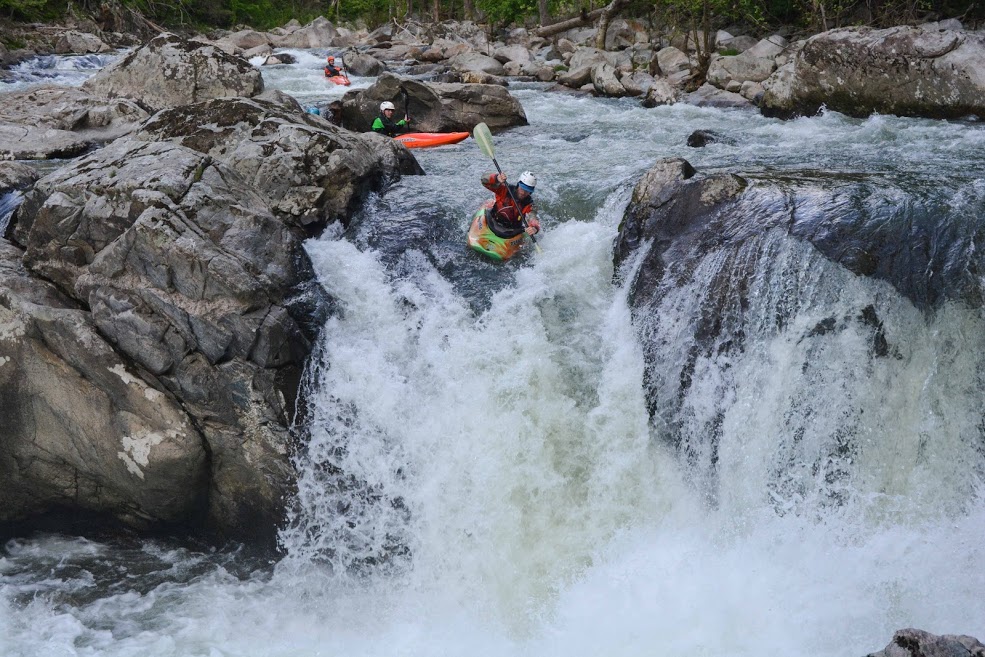
At one time, the Watauga River Gorge used to be among the “hairiest whitewater” to kayak in the Southeast.
In 1972, Greg Barrow and a buddy stopped at a rafting company in Boone to ask about the gorge. The two were told it was impossible to run.
“They said there were clogs you couldn’t survive and waterfalls too big to drop and too hard to portage,” Barrow said. “Of course, that fired us up more.”
Undeterred that day, Barrow and Dan Otey ran all the rapids, including modern Class 5 rapids Hydro and Stateline Falls, in 16-foot Blue Hole canoes – and lived to see another day. Barrow went on to found Edge of the World outfitters in N.C. and Canada and Otey wrote the first guidebook on Georgia whitewater.
Those two, though, weren’t the first to conquer the Watauga Gorge.
Boaters with the East Tennessee Whitewater Club were the earliest paddlers. Club members ran the gorge in fiberglass canoes 10 feet or longer. Those boats broke easily, requiring repairs before and after runs, especially in a river cluttered with boulders like the Watauga.
The invention of the modern kayak years later helped downgrade the Watauga Gorge. The shorter, plastic boats changed how boaters ran rivers, emboldening them to embark on more challenging whitewater. Plus, youthful kayakers naturally push the boundaries with ridiculous feats mom would rather not watch.
But by the late ‘80s, the Watauga was no longer considered “outer-limits steep” or “cutting edge,” phrases used by local paddler Mike Mayfield in interviews and Chris Bell in his Asheville Boating Beta website.
Or as Barrow said, “Now it’s like no big deal!”
First Descent: A Rite of Passage
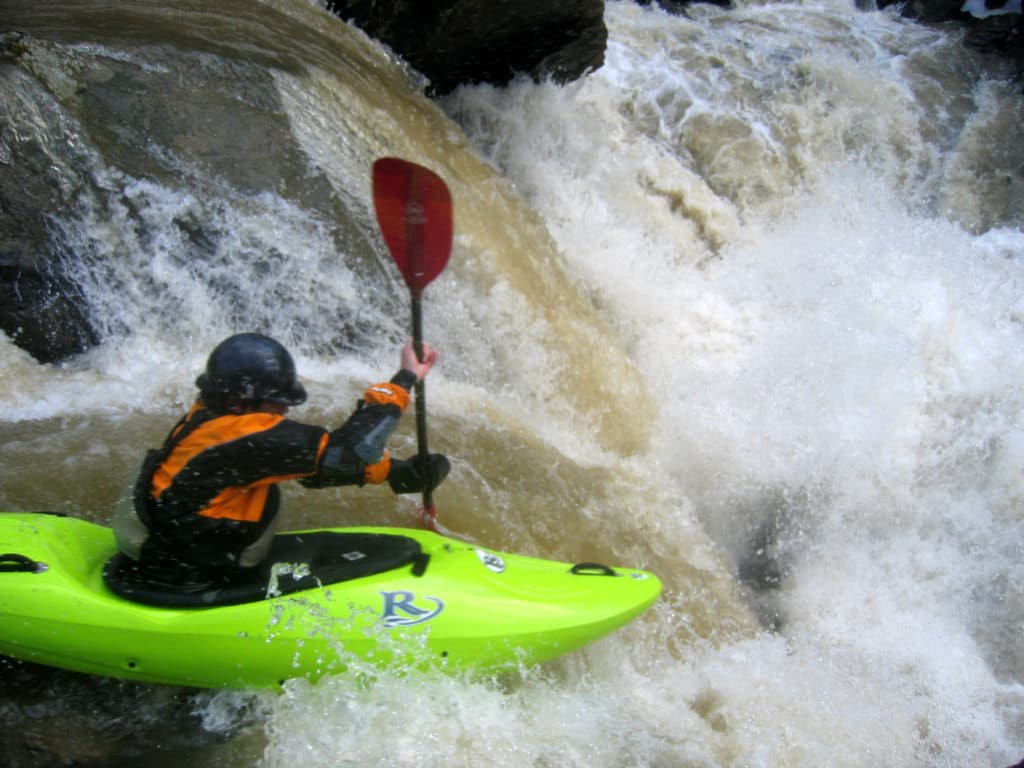
The Watauga Gorge is a solid Class 4 river with some Class 5 sections to keep you honest.
So it’s a pretty big deal – especially if you’ve never run it before. Usually, those familiar with the river lead first timers down to show them the intricacies of the rapids or as Bell wrote, the “traps and charms” of the Watauga.
Descending the Watauga Gorge for the first time is a rite of passage for regional kayakers.
Today, Cooper Lambla is a world-class kayaker who has paddled some of the baddest rivers on every continent except Antarctica, while documenting them as a filmmaker. But in the early 2000s, Lambla was a lower classman in high school and the Watauga was a benchmark river for the budding paddler.
Snow was on the banks that winter day. Lambla was kayaking with trusted paddlers familiar with the Watauga. He was already pretty “gripped and nervous” – and that was before meeting the Class 4+ rapid called Shitkicker.
“Towards the bottom, it’s got a sieve. Right in the middle of it, there’s this big log coming out of that sieve, and I remember going into that sieve backwards actually,” Lambla said. “It was a really scary experience. One of the first I’d ever had with a river feature like that.”
Fortunately, his buddies helped him out and everything was just fine, but that experience illustrated the seriousness of the Watauga. It was also an important step in his progression as a paddler.
Escaping in the Watauga Gorge Wilderness
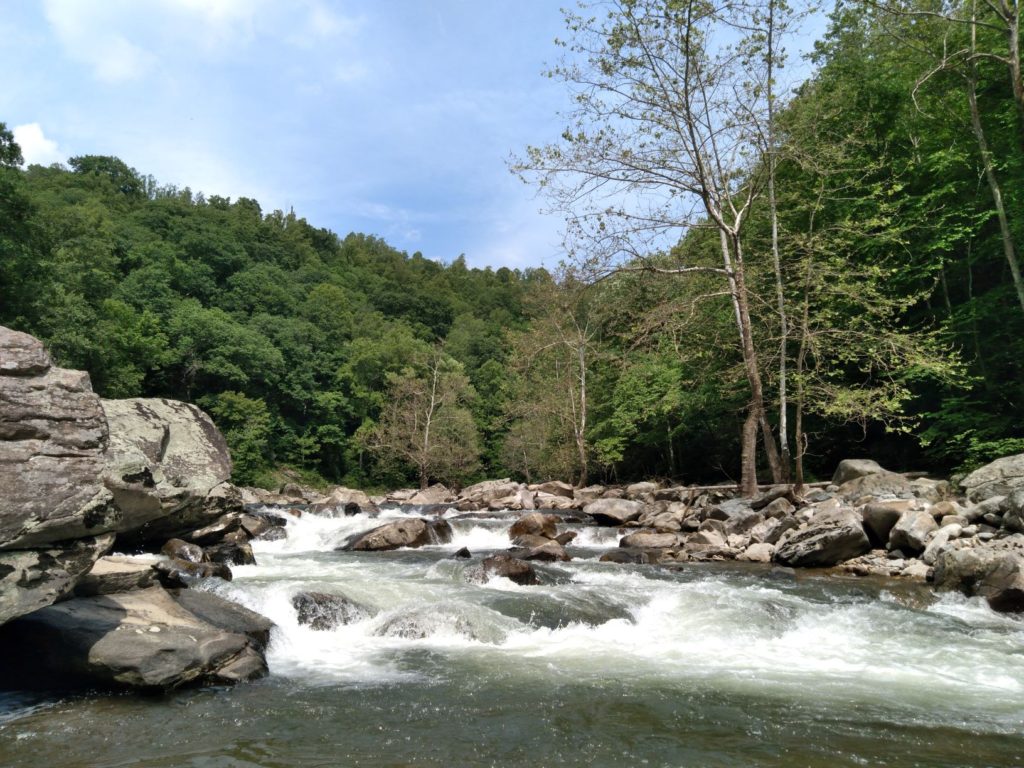
The Watauga Gorge is a “spectacularly rugged” wilderness.
That’s how David and Bob Brenner described the area in their classic guidebook, Carolina Whitewater: A Paddler’s Guide to Western Carolinas many years ago.
Unless you are a landowner in the gorge or a kayaker floating through, it’s likely you haven’t seen the interior – in part because it’s all private land and because access is difficult. In some spots, the elevation drops nearly 1,000 feet in a 15 minute trek.
From their boats, kayakers see all kinds of wildlife while riding the river but very little human activity. Surrounded by the whitewater and engulfed in the forest, the solitude can be immense.
“It’s just so hard to get away from everything these days. Almost all rivers, there’s either a railroad running down the river or a road or something, especially in the Southeast,” Peck said. “The Watauga is just unique. Once you leave Guy Ford, there’s nothing just about until you get to Watson Island. Up and down, you see otters, mink, beavers, bears. It’s just amazing.”
When boaters first discovered the gorge, the river ran clear all the time and you could paddle the entire 5 miles without encountering a human or seeing a home from the riverbed. Unfortunately, those two statements aren’t true all of the time anymore.
Development in the watershed, whether related to agriculture or construction, causes the river to run brown with sediment and other pollutants, including chemicals and sewage, after heavy rains. Sometimes when the rivers flash in the summer, the murky water and funky odor makes for less enjoyable paddling.
From the river within the gorge, you can now see a few homes downstream of the put-in, including one right on the riverbank near the Beech Creek confluence. Several super steep and rugged ATV roads were built in recent years. Kayakers have also noticed rock climbers (with permission from the landowner) bouldering along one section in the Watauga Gorge, too.
The biggest change, though, is the deforestation in the northeast section of the gorge. In the past few years, a couple different tracts of land, consisting of dozens of acres, were logged.
Late last year, Watauga River Holdings LLC bought 354 acres in the gorge for $800,000 – quite the steal at $2,250 per acre. The three adjoining tracts include 3,000 feet of river frontage, on river right, leading up to the state line.
Michael Sorrell, one of the principals, said the property will become a private retreat. No plans for clearcutting the property exist. But he does foresee “maybe a dozen family cabins at some point in the next 10 to 20 years” and a pavilion to hang out around down by the river.
The land encompassing the Watauga Gorge in North Carolina is all on private land.
While a one-mile section of the whitewater run in Tennessee is within the Cherokee National Forest, the rest of the gorge run borders private land in North Carolina, falling just a few hundred yards shy of the Pisgah National Forest.
A Timeless Paddle
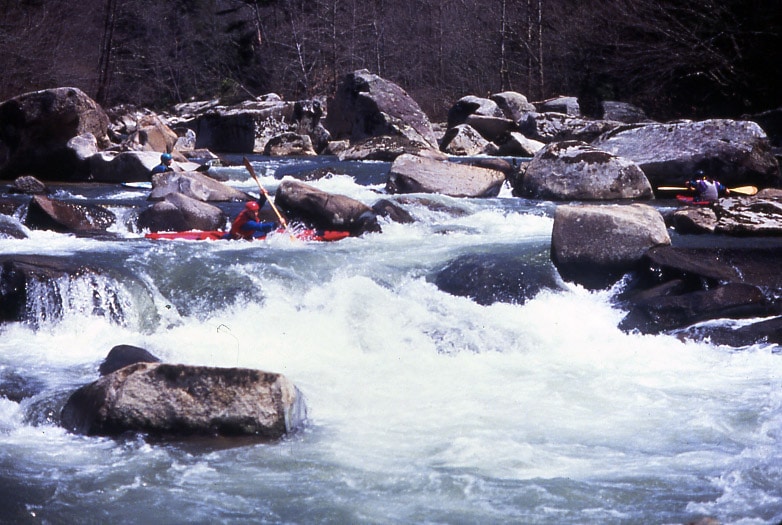
The Watauga Gorge didn’t lose its luster once kayakers moved on to more challenging and steeper whitewater.
The scenery and the diverse, technical nature of the whitewater are a couple reasons for this.
As American Whitewater notes, “There are a variety of pin spots, broach rocks, sieves, strainers, holes, and undercuts that require a boater to have precise boat control and excellent read-and-run river skills. Such a qualified boater will find a technical playground of boofs, ferrys, holes, mazes and drops arranged in such a way as to quickly make the Watauga a favorite run.”
Though AW notes that the ideal flow is 250 to 400 cfs (cubic feet per second), the river can be run lower if you are itching to get on the river during dry spells and significantly more if high-water is your game. Not many people, though, run the Watauga above 1,000 cfs.
As Isiah Stronach told me more than a decade ago when I first wrote about kayaking in the gorge,
“The Watauga is an incredible river because you can run it at so many levels. The lower the water, the steeper the run becomes, almost a creek feel,” he said. “Once you have more water, it takes on that river feel and the lines become wider.
“High water is whole different game. Trees fall into the river. Holes become much bigger and violent. The speed and movement of the water is greater. Your anticipation has to be on point because you can misjudge something and end up in a bad situation.”
The Watauga River is known as one of the most classic rivers on the East Coast in terms of the quality and cleanliness of the whitewater. Or as Cooper Lambla simply explained, “There are really good rapids that are challenging.”
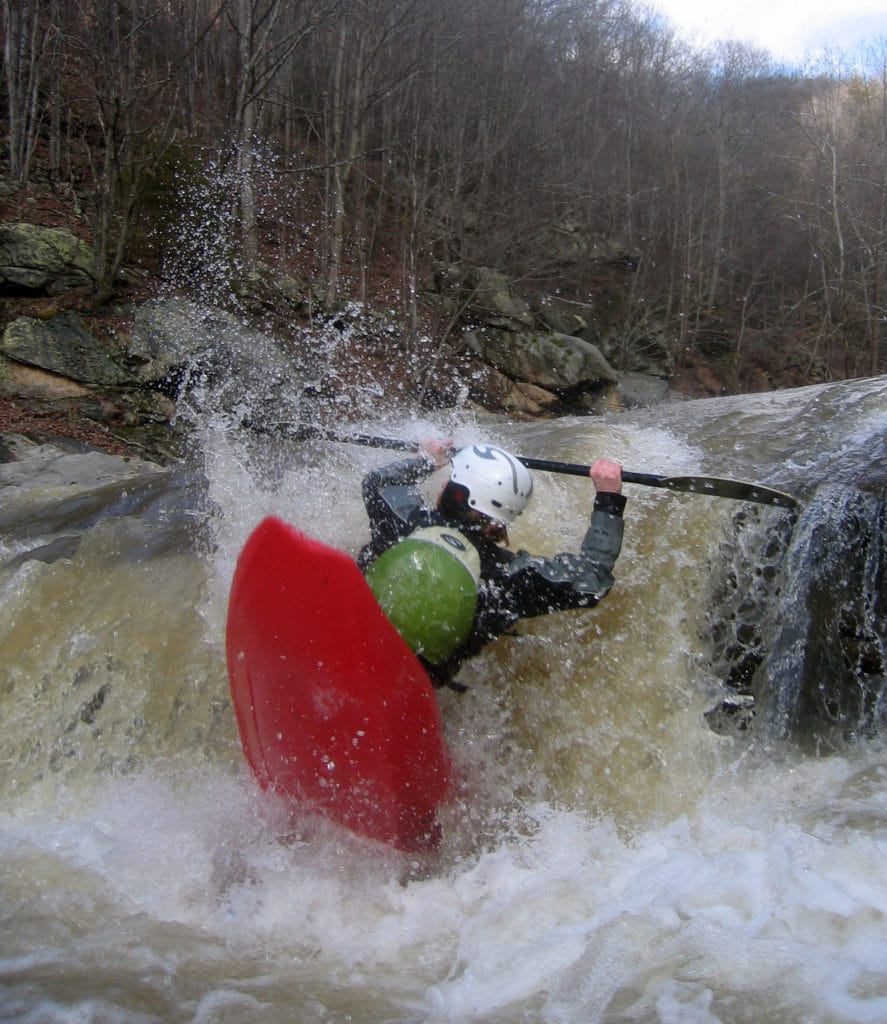
The Watauga descends nearly 100 feet per mile, including double that for two-thirds of the 5-mile run. Ten of the rapids are rated Class 4 or higher. For Lambla, though, it isn’t necessarily one rapid or another that occupies space in his mind when pondering the gorge – aside from that Shitkicker initiation.
It’s the pace of the river, as it builds up, to Hydro and Stateline Falls:
“As you put in, it’s kind of mellow and it starts picking up pace, picking up pace, picking up pace. Then hits its first climax in Hydro. And then it kind of calms down for a little bit and then starts ramping back up, more and more rapids, more and more rapids. And then it hits Stateline again. And then there’s a couple more options and then it comes down again. And so it really has this cool pace building up to these two high points. So I think that’s really one of my favorite parts of the river.”
More than a decade ago, Lambla told a friend, “If I had to pick only one river to run, it would be [the Watauga]. It has it all.” Now, that was some hyperbole in conversation with a buddy. And today, such a blanket statement is a bit unfair because of the many amazing rivers Lambla has paddled around the world.
But Lambla was getting to the heart of what makes the Watauga River in North Carolina – from the calmer water upstream to the expert paddling in the gorge – special from a kayaker’s point of view.
“I think what the Watauga River really represents is a river you could paddle your entire life, from being a complete beginner and never having been in a kayak or a watercraft to something that a seasoned expert can enjoy for decades and generations,” Lambla told me recently.
Mike Mayfield’s been doing just that. He’s been paddling the Watauga since before Lambla was born. A professor at App State who lives about 15 minutes away from the put-in, Mayfield first paddled the gorge in 1979.
That first time, he was nervous just like everyone else. Since then, he’s paddled it about 450 times.
“I actually enjoy it more [now],” Mayfield said. “It was at the limits of my ability and something I did for thrills more than fun when I first started. Just being more familiar with the river and knowing where the dangerous spots are and having much more reliable equipment helps a lot.”
More than Paddling: Friendships in the Gorge
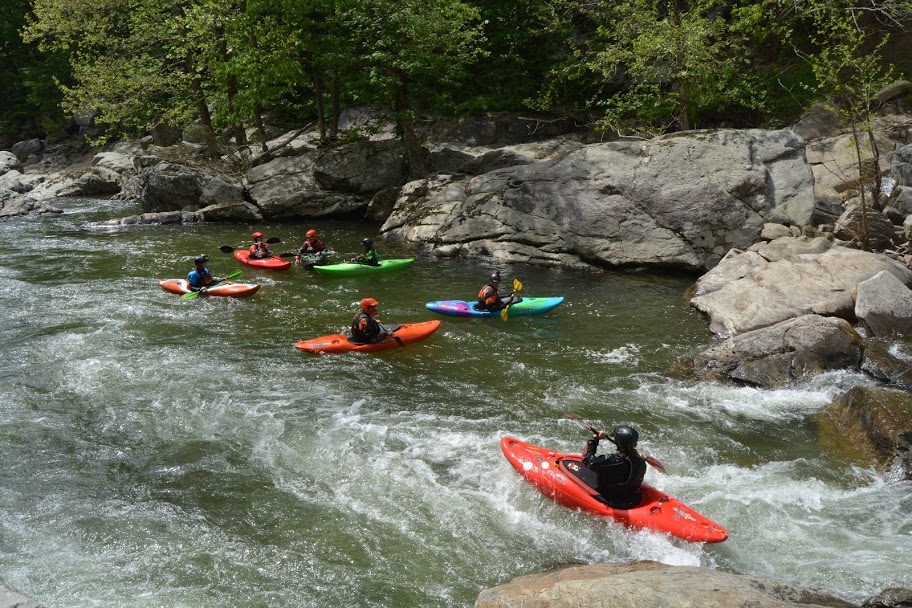
There is at least one more reason why the Watauga has stood the test of time. This is something Mayfield touched on in a written tribute to local legend Sherwood Horine.
He will forever be linked to the Watauga.
In the late ‘80s, Diana Holder was trapped under water at a section now known as Diana’s Ledge for 10 minutes. She was unconscious and blue in the face by the time she surfaced. Horine was a medical student at the time and revived Holder. She “recovered completely,” according to an account by Bell.
About a decade later, Horine started fundraising for a land purchase at the takeout at Watson Island – just before he died in a mountain biking accident at the age of 37. In memory, friends donated more money and American Whitewater was able to purchase property at the Watson Island for a takeout.
In the tribute, Mayfield wrote that Sherwood’s favorite local run was the Watauga – even though the Elk River, Doe River, Wilson Creek, Green River and Linville Gorge all have attributes the Watauga couldn’t match.
“Its appeal is undeniable but, at the same time, somewhat hard to explain in light of the appealing characteristics of all those other creeks,” Mayfield wrote. “The only way that I can explain it is to say that it is home. Home in the best sense of the word: familiar, comfortable and comforting, and often full of loved ones.”
This is something Dave Schatzel iterated when I asked him about what sticks out in his mind regarding the Watauga. Schatzel has run the gorge for 20 years now, including more than 1,000 times in the past decade.
He graduated from App State in 2001 and never left, mostly, because of the Watauga. He found work as a river guide at the various outfitters around the High Country and purchased a home at the takeout on Watson Island in Tennessee, hence is nickname T.O.D.D or Takeout Dave.
“When you say the Watauga Gorge, I think of kayaking and friendship with my fellow kayaking buds and girls. The Watauga Gorge is the reason I stayed in Boone,” Schatzel said. “It kept me here.”
Directions to Watauga Put-in & Takeout
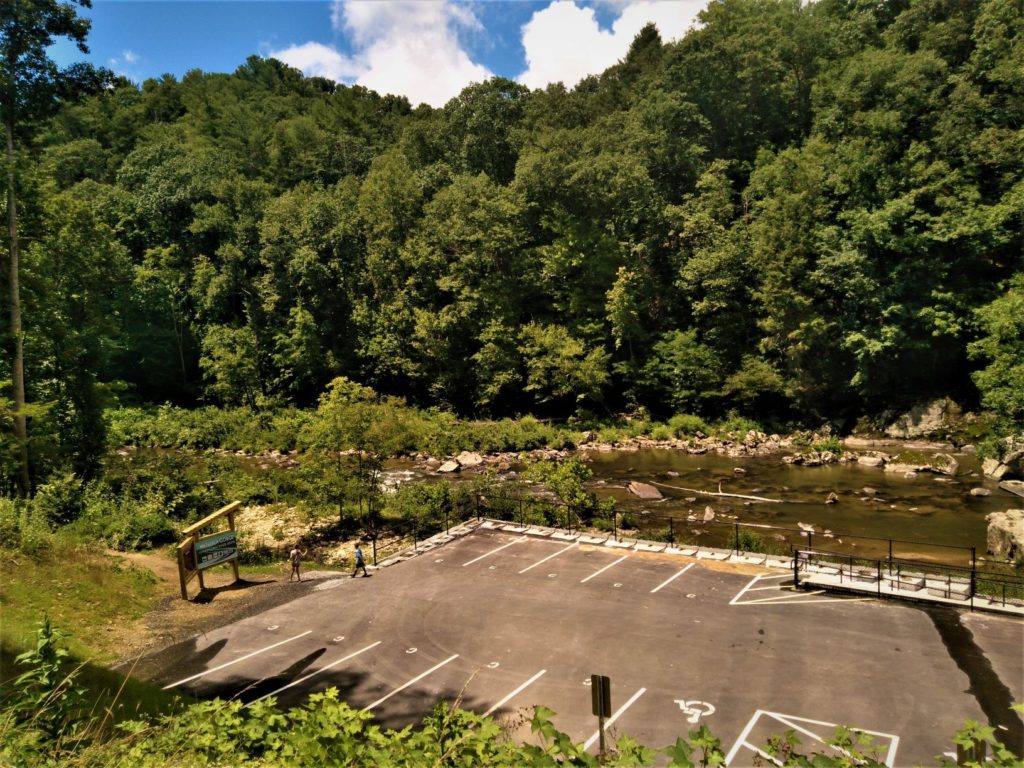
The put-in to the Watauga River Gorge is located at the Lower Gorge River Access on Guy Ford Road in North Carolina. The put-in is located about 20 minutes from downtown Boone, nearly a straight shot on U.S. 321.
The takeout at the AW Sherwood Horine Access takeout is located on American Whitewater-owned property off of Tester Road in Tennessee. Tester Road is located off of U.S. 321 as well. Be considerate when in the neighborhood.
If you use either access, consider becoming an AW member for as low as $25, depending on your situation.
See the map below for both put-in and takeout GPS coordinates.
Also, see what the level the river is running here.
Resources for Kayaking the Watauga Gorge
American Whitewater has details on all of the major rapids and other necessary information if you plan on kayaking the Watauga Gorge.
Chris Bell’s Asheville Boating Beta website is another great online resource for regional rivers including the Watauga Gorge.
Carolina Whitewater: A Paddler’s Guide to Western Carolinas by Bob and David Brenner